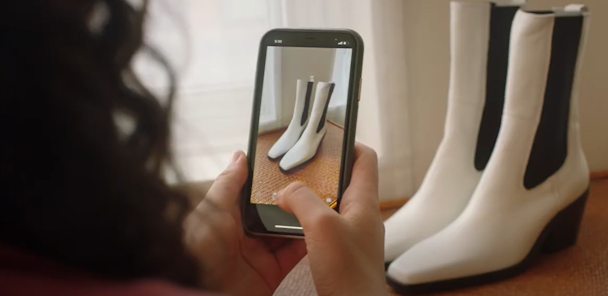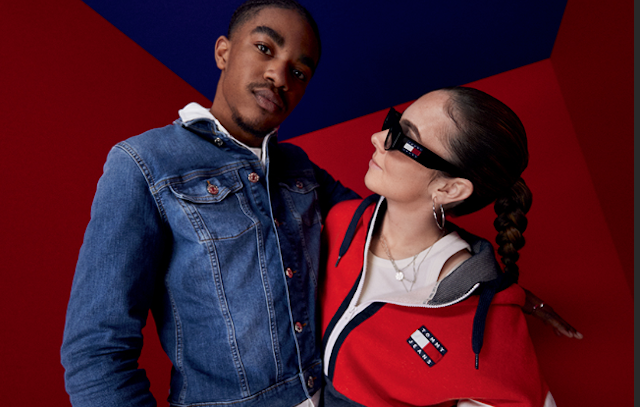How Vinted and Depop are stepping up as ad spend from ‘pre-loved’ brands tops £100m
The biggest brands in the secondhand category are evolving their marketing strategies as the sector becomes increasingly competitive.

Vinted’s ‘Dress for yourself’ ad campaign
Last year Vinted, eBay and Depop spent a combined £97m on ads amid a boom in the secondhand category, according to Nielsen Ad Intel.
The cost of living crisis and consumer desire for sustainable shopping has created the conditions for secondhand to grow, but clever marketing has normalized secondhand shopping allowing it to thrive. A survey from Unidays 27 million student members revealed 75% of Gen Zs are shopping secondhand and 37% are reselling their clothes.
Advertisement
M&C Saatchi London’s chief strategy officer Sophie Lewis says that the increased marketing spend is reflective of the fact secondhand shopping has officially reached the “tipping point where it's become mainstream”. She credits eBay’s Love Island sponsorship and its rebranding of secondhand to ‘pre-loved’. “Instead of a secondhand buyer being seen as a scrimper and saver, they’ve now become a savvy shopper,” Lewis says.
M&C Saatchi London’s real-time cost of living survey On the Money found Vinted was the most prevalent platform. The site has grown exponentially in the past two years from 1.2 million members in 2021 to over 8 million in 2023.
According to Ad Intel, Vinted spent £37m on advertising in 2022. Lewis says: “Vinted is clearly generating revenues as such they can use mainstream big rich mediums to bring in new people and get increased penetration.”
Advertisement
Vinted’s marketing strategy has four key tentpoles. Its consumer lead Natacha Blanchard explains that first and foremost Vinted is always “exploring creative ways of promoting the benefits of selling the things we no longer want or need.” Then comes the sustainability rationale for buying secondhand.
“Demonstrating how the app can be incorporated into our everyday lives,” is the third element to its strategy Blanchard explains, and then finally marketing that “‘normalizes’ buying secondhand in general”.
Channels that deliver “scalability, measurability, and efficiency” are prioritized at Vinted, Blanchard says. TV, BVOD and online video are a core part of Vinted’s media strategy with digital performance and influencers also in the mix. Vinted is also a sponsor of British soap Hollyoaks and creates its own content in partnership with the Channel 4 show.
Suggested newsletters for you
“Consumer behavior on a mass level has shifted in favor of more circular behavior and eventually more responsible consumption habits,” Blanchard says. “We are now the leading online C2C platform dedicated to secondhand fashion in Europe and are solidifying our mission to make secondhand the first choice.”
Depop has a different brand strategy from Vinted. Its director of brand marketing, Steve Dool explains that the most crucial element to Depop’s brand identity is its community-first mindset. “From a brand perspective it's a strong starting point for us in terms of consistency, but also in terms of differentiation,” he says.
To differentiate itself in a crowded market Depop sells itself more as an inspiration destination, and although the transaction is part of it, Dool says users are “buying into people and their styles when they join Depop.”

Depop's adspend is a fraction of Vinted's at around £500k in 2022, according to Ad Intel. The brand only runs campaigns that involve Depop creators and sellers this even extends to its brand partnerships with recent examples including Tommy Hilfiger and Ralph Lauren.
Depop typically uses UGC from its users in its marketing from its TV campaigns to out of home and digital. “Oftentimes, by looking at what the community is doing and what they're interested in, that's how some of our brand and marketing campaigns come together or come to life,” Dool says.
Launching a new secondhand brand
Simon Case, director of Chromatic Brands, has helped to launch the secondhand app Onro. He explains that in a market dominated by “generalists” like eBay and Facebook Marketplace, “Vinted and Depop have been smart in identifying a niche and just going out for it.”
Through market analysis, Chromatic Brands discovered that items that come under the “creative passions” header like music, film and photography were among the most traded on eBay and Facebook yet this audience was underserved by the bigger re-sale sites. These buyers expressed a desire to buy items from sellers they trusted would have looked after them and delivery was a second element not served by the Gumtrees of the world. “Once you know about the product and practical differences the big first challenge is positioning. What does it sell, who should care,” Case says.
Case says when marketing pre-loved “fairness” is the best emotion to lean into. “You have to be careful about leaning on the ethical message because it doesn’t sell so part of the key positioning should be fairness,” he says.
Fast-fashion adopting pre-loved
The wider fashion industry’s adoption of secondhand is the category’s second phase. Alex Gallagher who is chief strategy officer at Unidays says: “A pre-loved offering is fast becoming a necessity for brands and one of the best moves retailers can make this year. Leading online retailers like Pretty Little Thing and Asos have already reacted with their marketplace offerings.”
A recent pre-loved fashion report from Unidays revealed Gen Z are looking to swap their old clothes in-store in exchange for discounts and vouchers. “Establishing a trusted secondhand clothing cycle allows brands to own every step of the consumer journey, from purchase to re-sell and re-purchase,” Gallagher concludes.
Marcos Angelides, chief strategy and innovation officer at Spark Foundry adds that consumer appetite for resale goods represents an opportunity for brands both inside and outside the fashion industry. “If resale becomes an accepted way of shopping within fashion, the sector could set the trend for other industries, proliferating resale opportunities for brands in everything from tech to DIY.”

